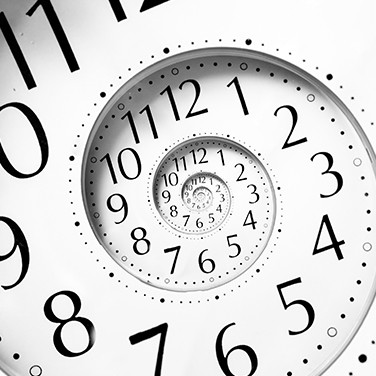3, 2, 1…Happy New Year! The Science Behind Atomic Clocks
By Horace Jenkins
We rely on the countdown to midnight every New Year’s Eve to be 100 percent accurate. And it is, give or take a nanosecond, thanks to the precision of atomic clocks.
Why an Atomic Clock?
While all clocks tell time, how they do so varies by design. The functioning of traditional timekeeping devices is based on some measurable, repetitive movement or activity, like the back-and-forth motion of a pendulum. But pendulums and springs are affected by their physical environment, which introduces variables that make this traditional method for measuring time inherently imprecise.
How Does an Atomic Clock Work?
The natural oscillations (or resonant frequency) of atomic particles, which provide the basis for atomic clocks, essentially serve the same purpose as a pendulum — but with far greater accuracy. In an atomic clock, the negative subatomic particles (electrons) that orbit an atom’s nucleus are subjected to a form of radiation, like radio waves, which causes these electrons to move back and forth between energy states. This energy change or resonance occurs at very consistent and specific frequencies to deliver a level of timekeeping accuracy that’s in a league of its own: Since 1967, the International System of Units (SI) has defined a second as the exact time required for a Cesium-133 atom to oscillate.
Types of Atomic Clocks
Atomic clocks come in several varieties. Cesium was used in the first atomic clocks, and is still in use today. Cesium atoms pass through radio waves and then into a detector that measures the microwave emissions that occur when the atoms return to their unexcited or ground state. Feedback from the detector is used to fine tune the radio waves and create a consistent flow of oscillating cesium atoms.
Rubidium atomic clocks utilize a glass vapor cell containing Rubidium-87 gas that both emits and absorbs light in reaction to microwave stimulation. These clocks are lower in cost (as little as 50 USD), smaller in size, and can last for about 10 years. Commercial, portable and aerospace applications often use Rubidium atomic clocks. Hydrogen clocks or masers (microwave amplification by stimulated emission of radiation) have superior short-term stability compared to other standards, but lower long-term accuracy.
Keeping Standard Times
Amazingly precise timekeeping is vital to the operation of many features of modern life, including navigation (GPS), high-speed electronic communications, and electrical grids. Today, roughly 400 atomic clocks around the world contribute to the calculation of International Atomic Time (TAI), which helps to set Coordinated Universal Time (UTC) and local times worldwide.
In the U.S., both the U.S. Naval Observatory (USNO) in Washington, D.C. and the National Institutes of Standards and Technology (NIST) maintain atomic clocks against which other clocks are compared. The NIST-F1 cesium atomic clock has a daily error of a mere 0.03 nanoseconds, approximately, or a loss of one second every one million years!
So this New Year’s Eve, as you reflect on the precious nature of time, remember that modern science is taking its measure of every special moment, too — but to a degree of precision even the most thoughtful individual cannot match.
